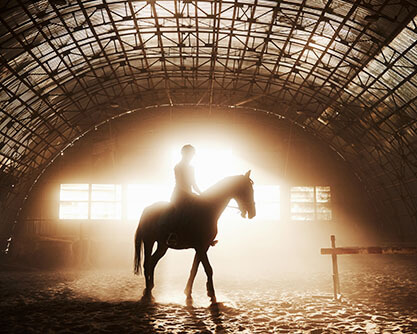High-Fat Horse Diets: Performance Horses
Dec 23, 2019

A high-performing horse can have up to twice the calorie requirement as the same horse in a maintenance stage. Owners and trainers of performance horses often give more feed to meet that calorie need. Because horses can use fat as a calorie source efficiently, and fat contains more than double the calories of starch, high-fat horse feeds make perfect sense to increase the energy intake without greatly increasing the quantity of feed needed.
Feeding higher-fat, controlled starch level feeds can play a role in lowering the chance of colic and laminitis by reducing the amount of starch (carbohydrates) in the ration. Here’s why:
Feeding higher-fat, controlled starch level feeds can play a role in lowering the chance of colic and laminitis by reducing the amount of starch (carbohydrates) in the ration. Here’s why:
- Horses with a very high grain ration are often at risk because high levels of grain feeding can cause a starch overload in the small intestine and cecum.
- Overloading the small intestine with starch allows that extra starch to pass in to the cecum and large colon, which is where forage is digested.
- Fiber digestion is accomplished by the bacterial and protozoal populations residing in these organs. When starch enters the cecum the pH drops and this bacterial population dies.
- This can result in a cascade of events that may include colic, laminitis and death.